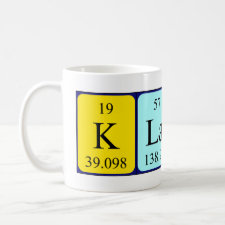
Authors: Rosatzin T, Andersson LI, Simon W, Mosbach K
Article Title: Preparation of Ca2+ selective sorbents by molecular imprinting using polymerizable ionophores.
Publication date: 1991
Journal: Journal of the Chemical Society-Perkin Transactions 2
Issue: (8)
Page numbers: 1261-1265.
DOI: 10.1039/P29910001261
Abstract: Molecular imprints against calcium and magnesium ions, respectively, were prepared in divinylbenzene-based polymers. A vinylic, Ca2+- selective, neutral ionophore N,N'-dimethyl-N,N'-bis-(4-vinylphenyl)- 3-oxapentanediamide was synthesized and used as the ion-complexing monomer. In order to investigate the ion-complexing abilities of this neutral ionophore, this compound was tested as a neutral carrier in the plasticised PVC membrane of an ion-selective electrode. Electrode response and selectivity coefficients recorded for the ionophore proved to be equivalent to the values recorded for similar parent diglycolic acid amides. In analogy with other 3-oxapentanediamide derivatives, the ionophore is expected to form complexes with calcium and magnesium ions with a molar ratio, ligand to metal ion, of 3:1 and 2:1, respectively. Therefore the metal ion, added to the polymerisation mixture, was expected to act as a template for the ionophore during the polymerisation. The resulting polymers were analysed for their ability to extract calcium ions from methanolic water. The polymers prepared against calcium and magnesium ions were found to bind calcium ions with 6- and 1.7-times lower K(diss)- values, respectively, when compared with reference polymers prepared in the absence of metal ions. The increased binding strength is attributed to the arrangement of ionophore units in the resulting polymers by the template ions during the polymerisation. In addition, the number of binding sites for calcium ions, determined for the respective polymer preparation, fitted well with theoretical values calculated from the stoichiometry of complexation of the ionophore by calcium and magnesium ions, respectively
Template and target information: Ca2+, Calcium ions



Join the Society for Molecular Imprinting

New items RSS feed
Sign-up for e-mail updates:
Choose between receiving an occasional newsletter or more frequent e-mail alerts.
Click here to go to the sign-up page.
Is your name elemental or peptidic? Enter your name and find out by clicking either of the buttons below!
Other products you may like:
 MIPdatabase
MIPdatabase









